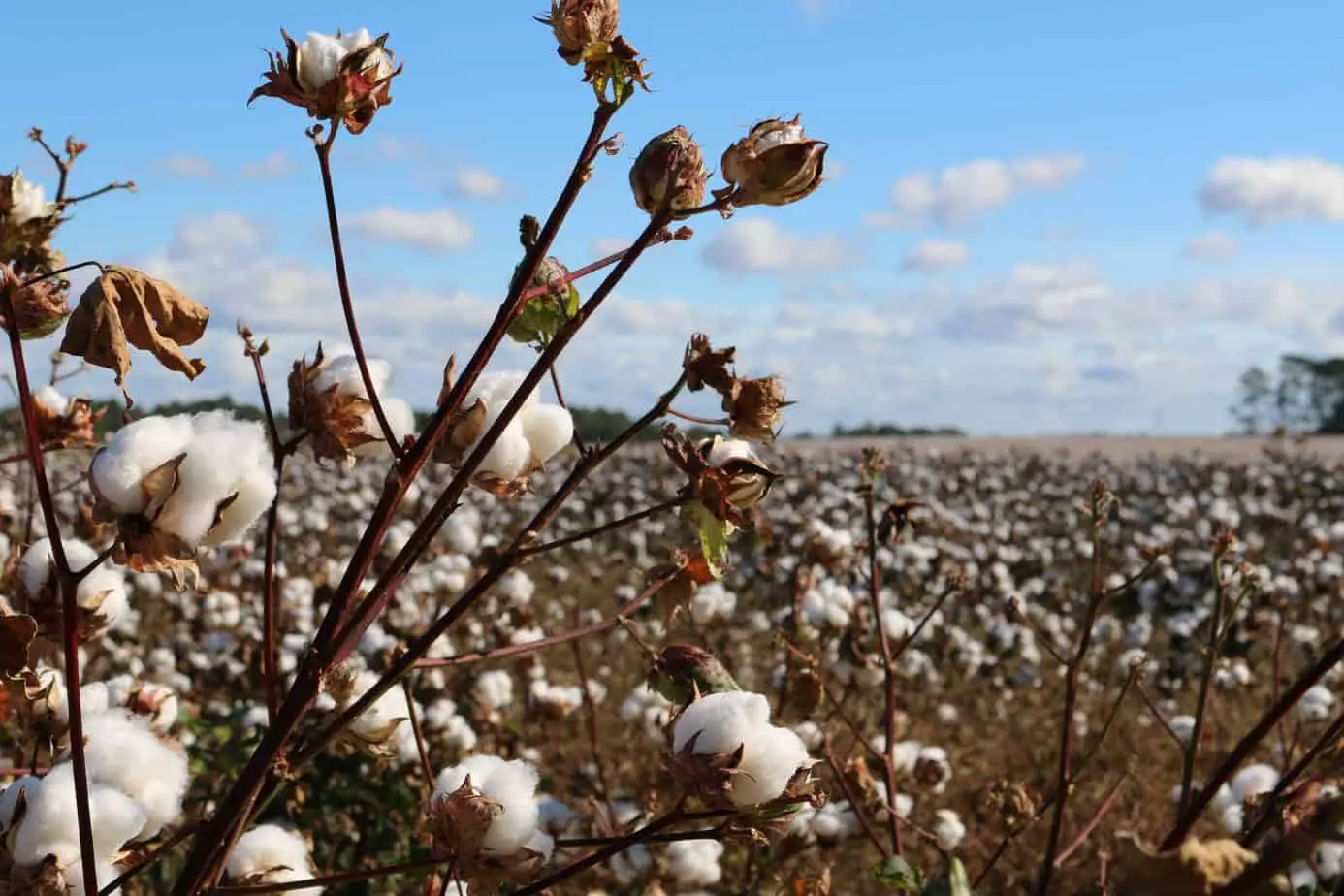Dating back to 6,000 B.C., cotton was widely found in India and Pakistan. Countries have long used cotton in tradings and learned how to usher it into the clothing industry. Until the present day, it continues to be one of the most used fabrics in the world because it’s breathable, washable, durable, and comfortable to wear.
While it secures several merits that make it preferable for different clothing items, and it’s generally a good, natural fabric, the question of whether it is ethical and sustainable or not is a different story.
It is true that cotton is a biodegradable fabric, but does this mean it causes no damage to the environment? Well, no. Cotton can be harmful to the environment, and here’s why.
1. Water Consumption and Contamination

While most people love conventional cotton because it’s comfortable to wear, vegans actually prefer cotton because it’s a safe, cruelty-free fabric. But is it?
To answer this question, let’s begin by acknowledging that cotton is an environmentally demanding crop.
Starting with the facts, it takes approximately 3,000 liters of water to produce a single shirt, let alone the other factors included in the cotton industry. Some countries already suffer from water shortage, but since they rely on cotton production for income, it gets harder to cultivate other crops.
Additionally, it’s not only irrigation that consumes water in cotton production; other factors contribute as well. Since the need to get clothing items made at a lower price is becoming more common, severe chemicals are used for fabric dyeing.
Said chemicals are disposed of into water, which causes severe water pollution. The polluted water is used in large quantities for irrigation, and it does more harm than good to the crops, locals, and animals. So, while cotton itself is vegan, the manufacturing process of cotton clothes might indirectly harm animals.
Next time you’re in your local shop ready to purchase a new cotton shirt, take some time to reflect on the idea of the “virtual water” you’re wasting with that money.
In many countries, like India, for example, people are running short on water, in order to create that same exact cotton shirt you’re buying. According to recent studies, water consumed in cotton production in India can provide the whole nation with approximately 100 liters of water per person daily for an entire year.
A perfect example of how damaging cotton production can be is the Aral Sea lake. It was once a huge water reverse that was used for irrigation. As the demand for cotton increased, more and more water was being used to keep up with the harvest, which eventually led to two-thirds of the Aral Sea drying up within the matter of a few years.
2. The Use of Pesticides and Chemicals

Since cotton is already used in several industries, the need to get a fast-growing and plentiful harvest has prompted farmers to add pesticides to their crops. The problem is quite simple to explain, but harder to solve. These pesticides can seep into the soil, the water, or even the air that you breathe and pollute them.
Here’s where some controversies arise: Some farmers are so impatient that they willfully choose to use harmful fertilizers and pesticides to rid them of different pests, like the catastrophic bollworm. The results are tragic since these chemicals pollute surface water, as well as groundwater.
Polluting clean water is harmful to both humans and animals, which is why some vegans are against the cotton industry; it can indirectly cause harm to wildlife.
One solution farmers came up with is to use genetically modified cotton. While they’re doing it to get a rich harvest, things often end on a terrible note for them. The seeds of the genetically modified cotton don’t reproduce; if they last for one crop, they won’t last you for a second. Not to mention, that significantly damages the soil.
3. Human Labor and Human Rights Violations

What does cotton have to do with human rights? Let’s delve into the past before we discuss how that’s still an issue in the present.
When cotton was introduced to the United States, it turned the Deep South into a valuable, rich piece of land. Sadly, that led to the need for more workers to cultivate cotton. The movies portrayed it, and they represented the issue accurately. People became like commodities because they were expected to make the arduous effort to harvest cotton with minimal to no money.
In the present day, some countries haven’t abandoned their egregious violations of human rights. Child labor and forced labor are still as rampant as ever. Instead of going to school, children have to go to cotton fields where they spend hours under the scorching sun just to get enough cotton to make a shirt or two ready for consumers.
In most countries that are massive exporters of cotton, the majority of cotton-workers are still underpaid.
The case we’re making here isn’t intended to make you stop purchasing cotton products, but to get you thinking thoroughly about the conditions under which your favorite pair of trousers or shoes were made.
We’re not saying that the solution is to ditch cotton altogether. We only advocate for better conditions regarding water consumption, the use of pesticides, and human labor.
Final Words
You love cotton products, we get it, because we do, too. But before we state our final judgment, let’s highlight what makes a product sustainable.
A sustainable product is one that uses good, biodegradable materials, renewable energy sources, a reasonable amount of water, and humane work conditions. We’re in no way asking you to stop using conventional cotton. A better and healthier solution is using organic cotton, for instance.
Organic cotton is grown from non-GMO seeds. It doesn’t use pesticides or insecticides, which removes the environmentally damaging aspect. Additionally, it uses significantly less water than conventional cotton does.
The issue of human labor is still present, but thanks to the Internet, you can easily learn how each brand gets its cotton and decide whether it’s ethical or not.
We do understand that you sincerely want to lead a healthier life on a healthier planet, and pondering over controversial topics like the sustainability of cotton brings you one step closer to your noble goal.








![[Company Profile] Will's Vegan Shoes: The Best Products They Offer 35 Will's Vegan Shoes](https://getvegan.com/wp-content/uploads/2021/10/wills-vegan-shoes-280x210.jpg)
![Everything You Need to Know About Vegan Shoes [Ultimate Guide] 38 vegan shoes guide](https://getvegan.com/wp-content/uploads/2021/07/vegan-shoes-280x210.jpg)
![[Company Profile] 15:21: The Best Products They Offer 41 15:21 Company Profile](https://getvegan.com/wp-content/uploads/2021/07/1521-store-1-280x210.jpg)
![[Company Profile] Matt & Nat: The Best Products They Offer 44 Matt and Nat](https://getvegan.com/wp-content/uploads/2021/04/matt-nat-280x210.jpeg)
Leave a Reply